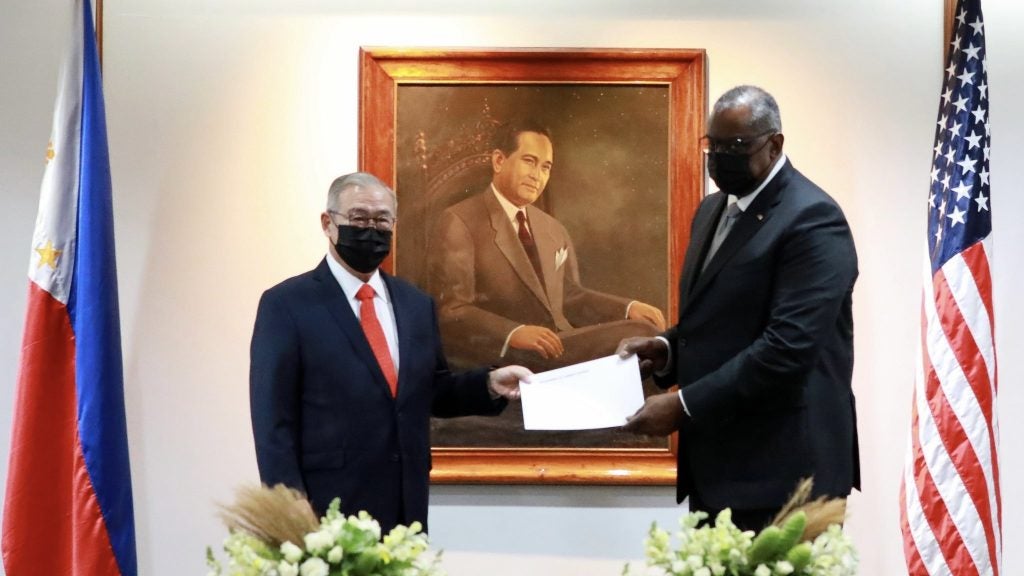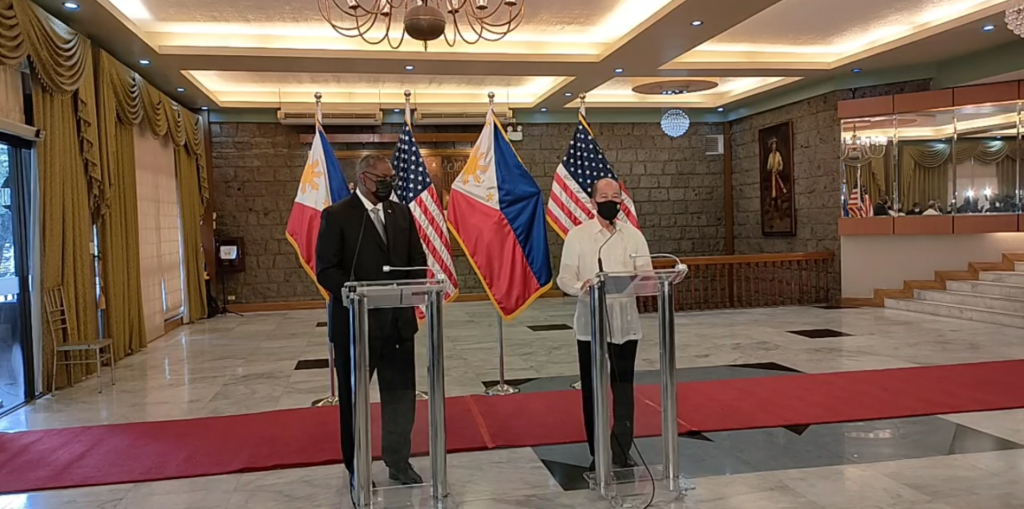Philippines To Keep Visiting Forces Agreement With United States
The Defense Secretary of the Philippines, Delfin Lorenzana, announced on Friday morning that President Rodrigo Duterte had decided to “recall or retract” the notice of termination for the Philippines-United States Visiting Forces Agreement sent in February 2021. According to Lorenzana, the decision was made following a meeting between US Secretary of Defense Lloyd Austin and Duterte Thursday night.
Lorenzana stated to reporters present for a July 30 joint press briefing by Lorenzana and Austin at Camp Aguinaldo that the decision meant that the VFA was now “in full force again”, with “no termination letter pending and we are back on track”. Austin expressed his gratitude for the decision to fully restore the VFA, which he stated would help build a “strong, resilient” alliance between the United States and the Philippines, which he described as vital to the security, stability and prosperity of the Indo-Pacific. Austin added that he and Lorenzana had further discussions earlier on Friday on how to further strengthen US-Philippines ties going forwards.

Also on Friday, Philippines Foreign Affairs Secretary Teodoro Locsin Jr. announced that he had delivered a diplomatic note recalling the abrogation of the VFA to Austin, on the instructions of Duterte. In a statement, Locsin said that “The United States has shown its commitment to fulfill its obligations to us under the alliance. They have addressed issues arising from our security relationship with good faith. Together, we have moved forward on the basis of common interest, shared values, and mutual respect.”
Friday’s decision puts to rest a year of uncertainty over the future of the Visiting Forces Agreement. While the announcement in February last year had sparked concern among diplomats and defense officials due to the President’s public statements in favor of China, Duterte subsequently decided to suspend the termination of the agreement three times, in order to facilitate a renegotiation of the VFA. As a result, speculation turned to when a new and “improved” agreement governing the legal status of US troops in the Philippines would be formally signed.
However, Lorenzana said that no changes had been made to the text of the Visiting Forces Agreement. Instead, he said, a side agreement would be reached between the US and Philippines on other issues broached during the past year of negotiations. A senior government official that spoke to Rappler said that the side agreement would provide guidelines on “when and how” Philippine authorities will exercise criminal jurisdiction and custody over US military personnel arrested for criminal behavior in the Philippines.
The announcement also follows reassurances by Austin and US Secretary of State Antony Blinken that the US-Philippines Mutual Defense Treaty would apply to attacks in the South China Sea, including the West Philippine Sea. The treaty, which obligates the US and the Philippines to defend each other should they come under attack, will turn 70 on August 30.
Also signed during the visit was the PH-US Aeronautical and Maritime Search and Rescue (AMSAR) Agreement. According to the Philippines’ Department of Foreign Affairs, the agreement provides delimitations on search & rescue regions of the Philippines & US, fostering stronger bilateral cooperation in maritime and aeronautical search and rescue, enhancing the effectiveness of search and rescue operations.

